Nvidia GeForce GTX 1080 Ti 11GB Review
Nvidia's GeForce GTX 1080 Ti is now the fastest graphics card available, and at $500 cheaper than the previous champ! Should you buy now, or wait for AMD's Vega?
Why you can trust Tom's Hardware
The Division & The Witcher 3
Tom Clancy’s The Division (DX12)
While we’re using the same Ultra quality preset to test The Division, DirectX 12 support was added after our Titan X review, so these are our first numbers under the lower-level API.
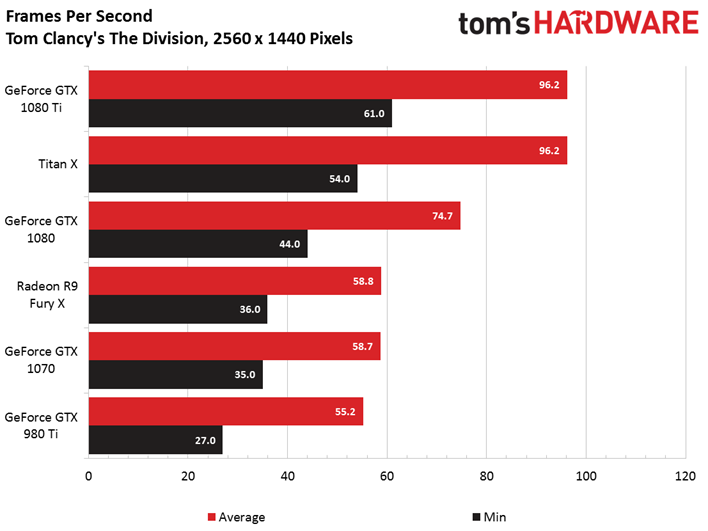
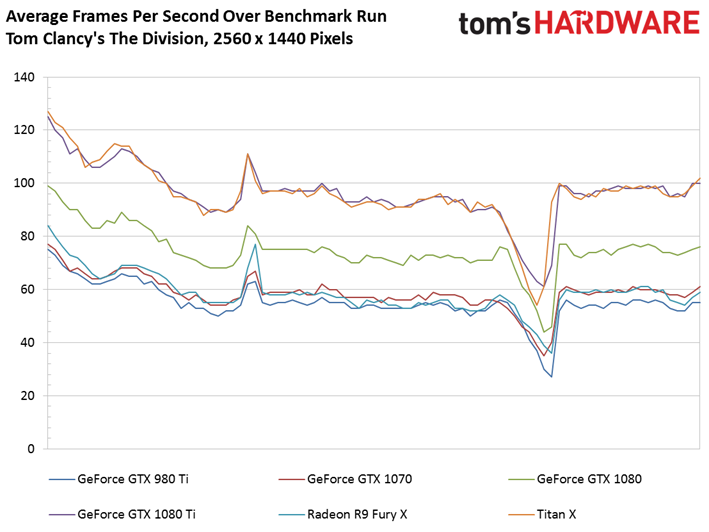
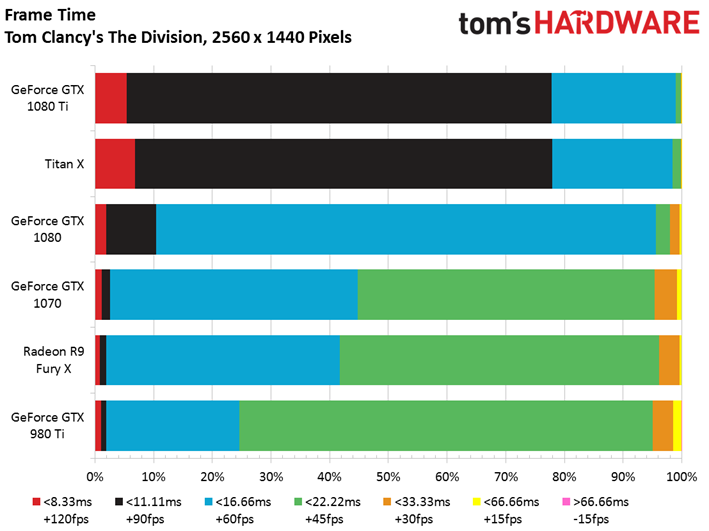
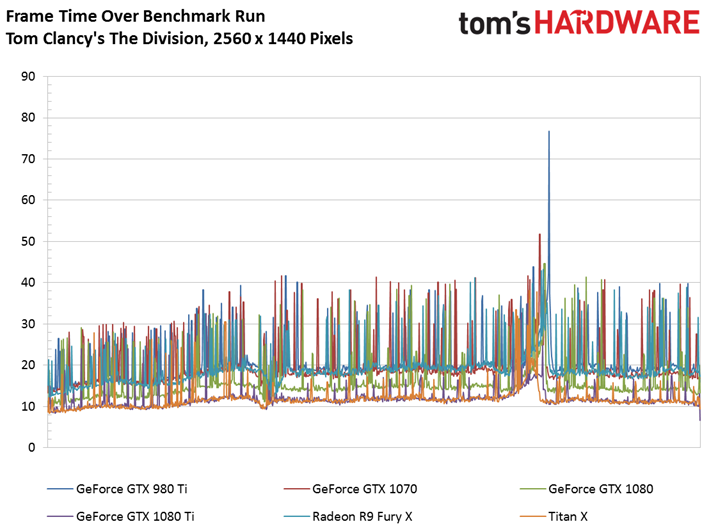
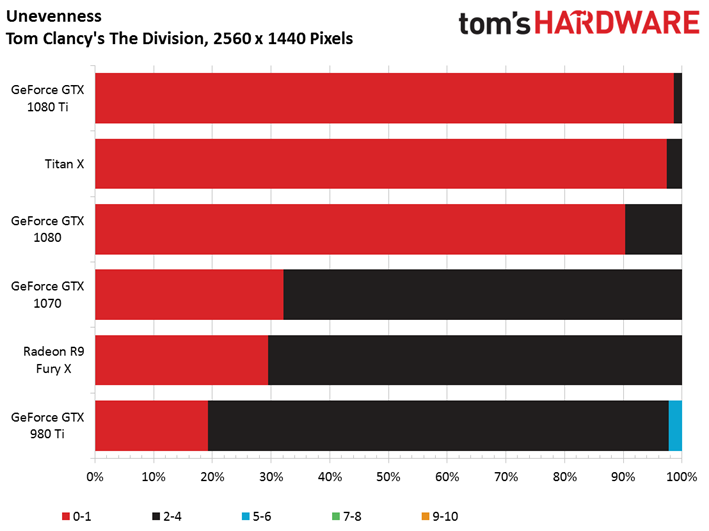
Compared to the data published in our Nvidia Titan X Pascal 12GB Review, the Titan X is up almost 10% through some combination of our upgrade to a Core i7-7700K, the move to DirectX 12, and updated drivers. In comparison, AMD’s Radeon R9 Fury X is up a little more than 10%.
The GeForce GTX 1080 Ti ties the Titan X in average frame rate, but delivers a higher minimum.
Only the GeForce GTX 980 Ti registers frame time spikes large enough to appear on our unevenness index as less-than-ideal.
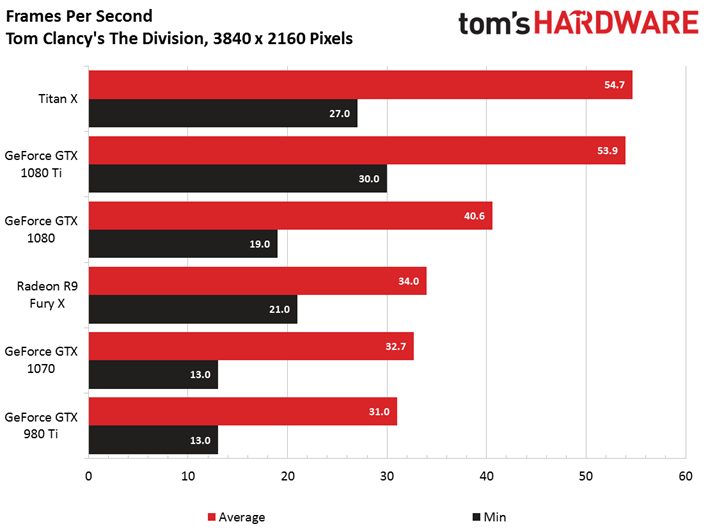
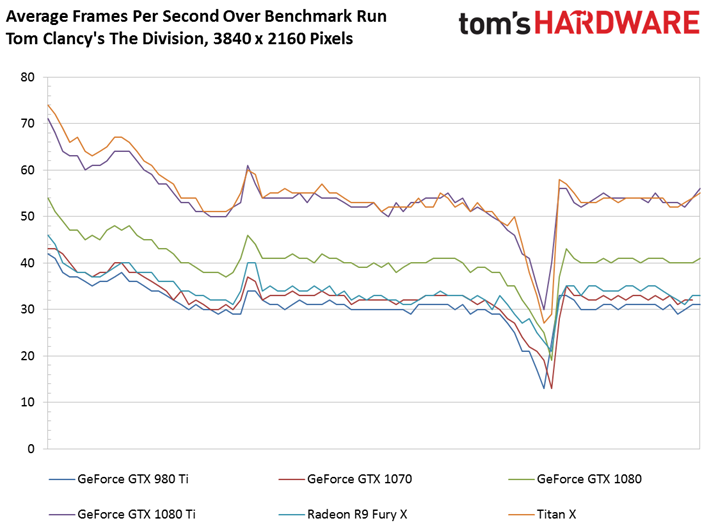
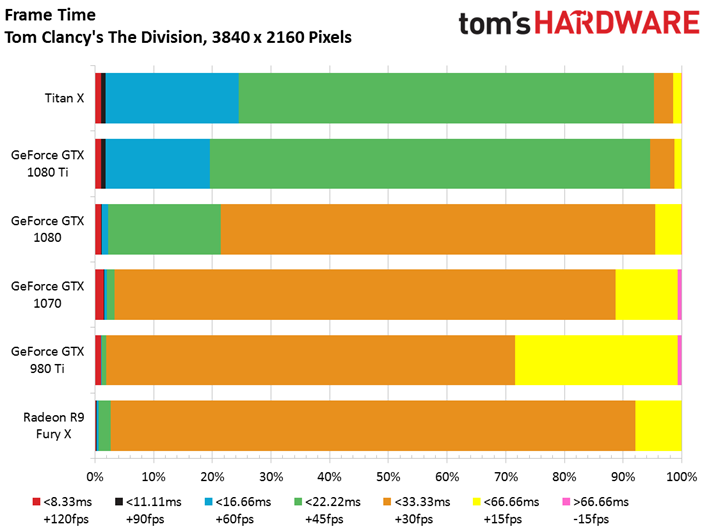


Titan X (Pascal)’s gains shrink to ~7% compared to our review last August, while the Radeon’s drop to ~3%. Whereas the Titan X is playable, though, AMD’s Fiji-based card isn’t.
GeForce GTX 1080 Ti lands right underneath the other GP102-based board, besting the 1080 by almost 33%.
The Witcher 3 (DX11)
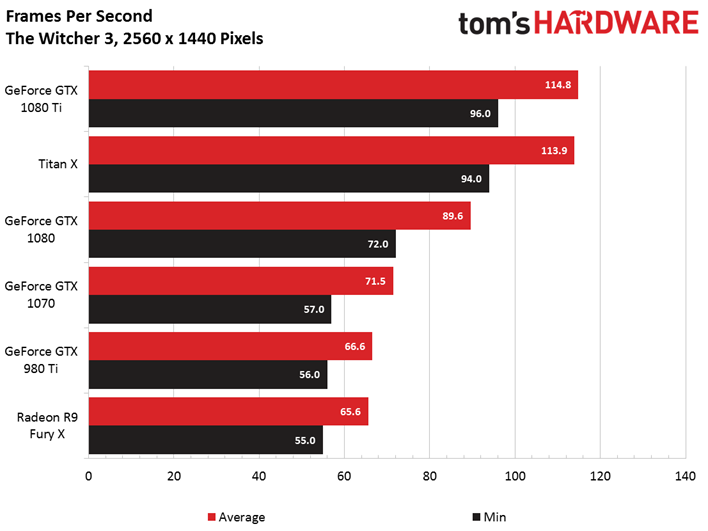
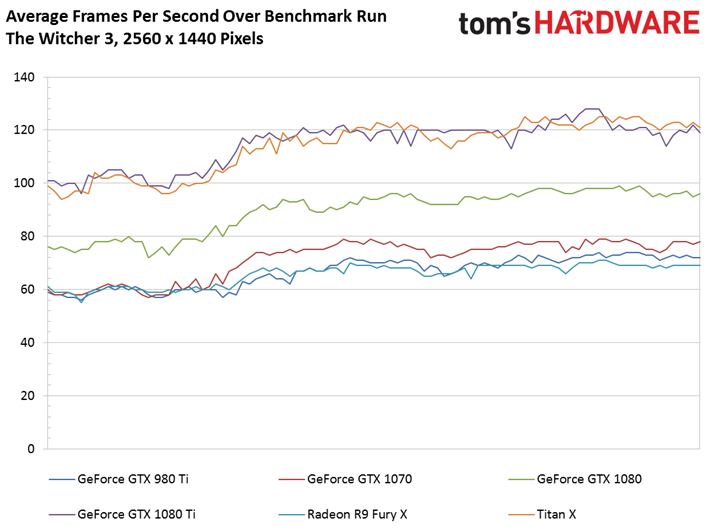
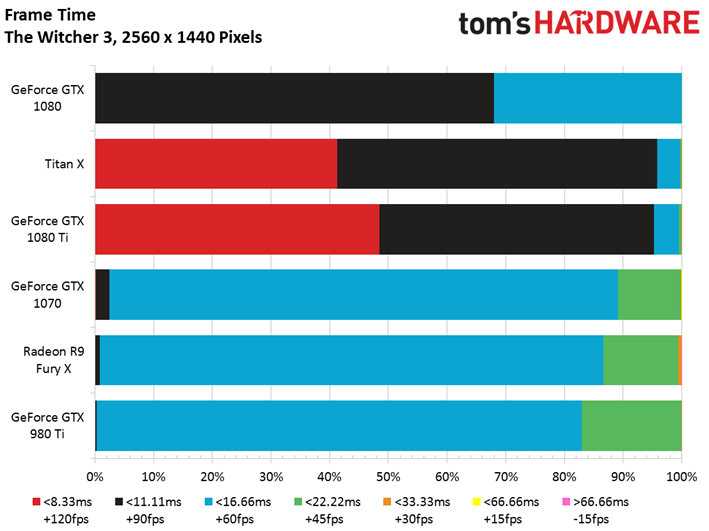
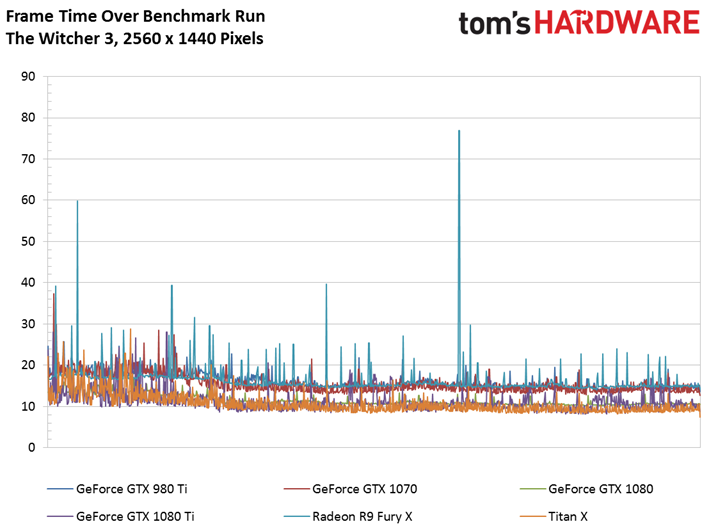
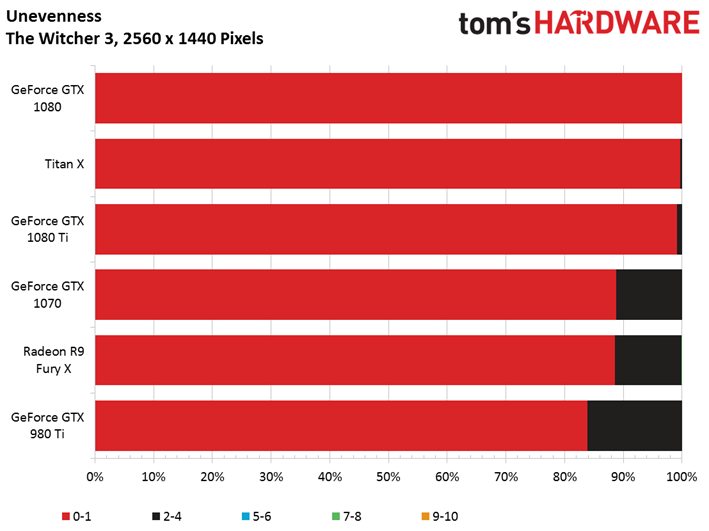
We re-ran these numbers using the latest drivers (because that’s the right thing to do), but performance looks really similar to what we saw last August. All of the cards fare well, serving up playable frame rates at 2560x1440.
Get Tom's Hardware's best news and in-depth reviews, straight to your inbox.
For those of you keeping score, GeForce GTX 1080 Ti is 28% faster than the 1080 at this resolution.
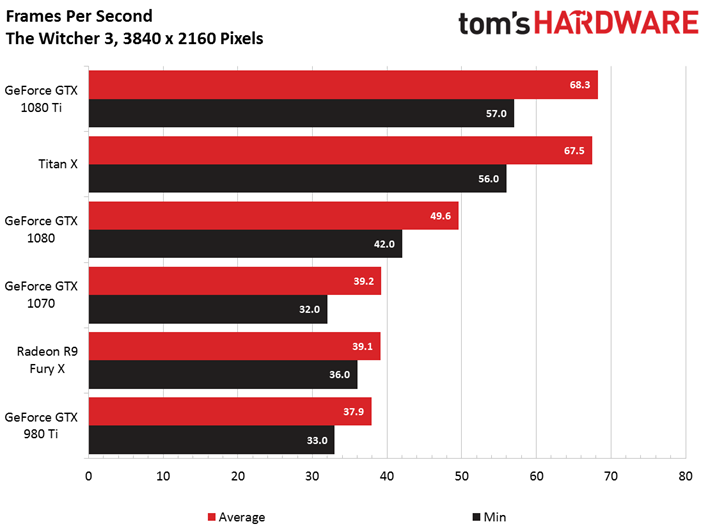
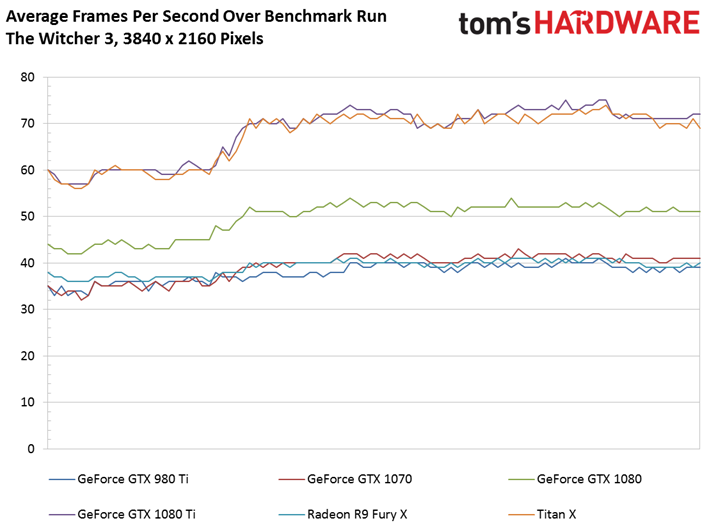
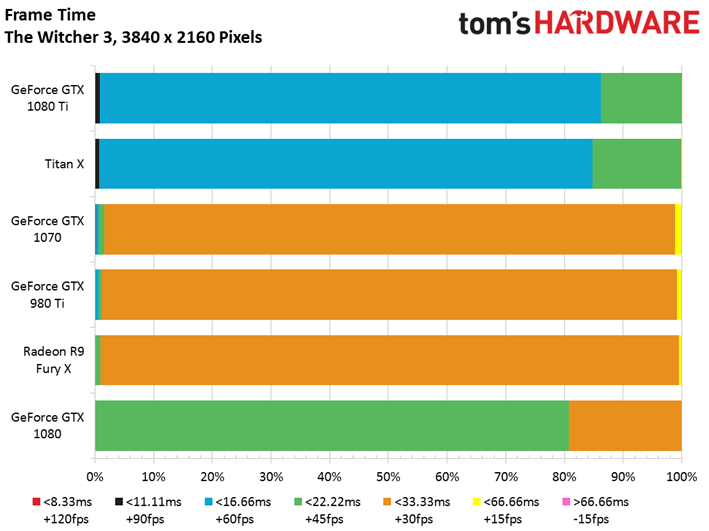
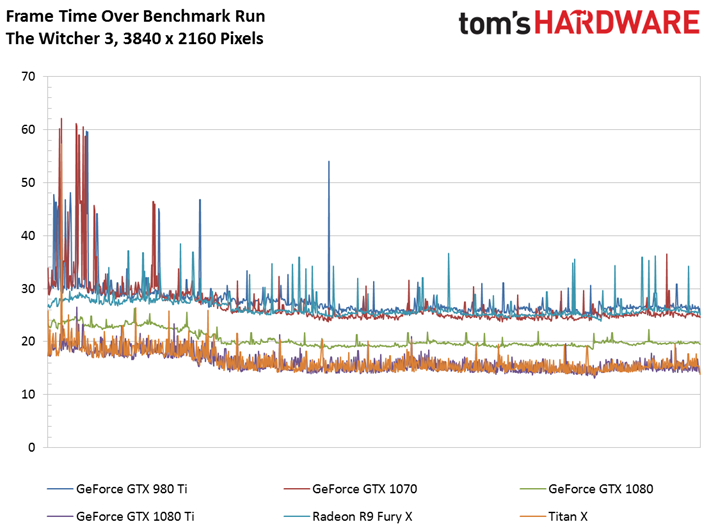
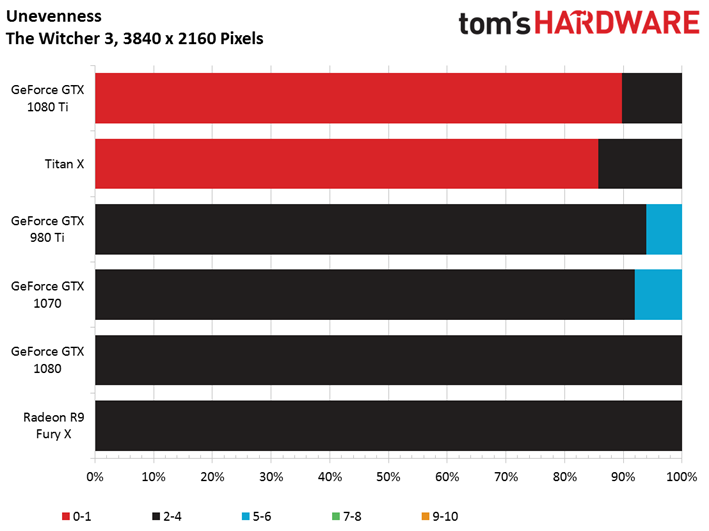
Then, it’s almost 38% faster than the 1080 at 3840x2160. Previously, respectable single-GPU performance at 4K and The Witcher 3’s highest detail settings would have cost you $1200. Now you’re looking at a $700 outlay.
Slower cards can handle this resolution, but you’ll probably want to dial the quality sliders back a notch or two. Or better yet, run at 2560x1440 with the settings max’ed out—The Witcher 3 is one of those games that’ll have you marveling at the developer’s attention to detail.
Current page: The Division & The Witcher 3
Prev Page Metro, Tomb Raider & Ghost Recon Next Page Power Consumption-
dstarr3 Oh my. I've got a 980 Ti now, and I thought I could hold out until Christmas 2018 or so to upgrade, but seeing that this card has nearly double the FPS... That's a pretty big deal...Reply -
HaB1971 Would love one, but pointless for 1080p gaming which is what I am restricted to thanks to 2 x 27inch 1080p monitors. I don't need to replace those either they work, they are good enough and not interested in VR etc. 4k for me, is still too priceyReply -
salgado18 Reply19401792 said:Oh my. I've got a 980 Ti now, and I thought I could hold out until Christmas 2018 or so to upgrade, but seeing that this card has nearly double the FPS... That's a pretty big deal...
Why not wait? Your card is still great, and you can pick up a 2080 or Vega 2 by then. Unless you can't live without 4K at Ultra, keep your card. -
Ray_58 Hab1971, 4k really isn't that bad price wise, its ok, part of the problem is the LCD panel industry milking the crap out of 1080p resolutions still up to the 300$ pricepoint when in actuality we should have been at base standard 2k TN/IPS panels at the 160$-300$ range. Still today though the greatest costs are the fact 60htz is still standard and any increase is massive price cost increases, and obviously Gsync for NVidia. Still spending $500-$800 on a monitor and then dropping 700$ on this is a bit 2 much for the mainstream. Id rather buy a 2k IPS screen with Gsync at 700$ than a 4k 60htz monitor at 400$Reply -
envy14tpe Reply19401792 said:Oh my. I've got a 980 Ti now, and I thought I could hold out until Christmas 2018 or so to upgrade, but seeing that this card has nearly double the FPS... That's a pretty big deal...
I feel the same. I see the jump in BF1 to be massive and enough to warrant a 1080 Ti for 1440p gaming. I'm holding out until June when the next Nvidia price drops. -
dstarr3 Reply19401838 said:19401792 said:Oh my. I've got a 980 Ti now, and I thought I could hold out until Christmas 2018 or so to upgrade, but seeing that this card has nearly double the FPS... That's a pretty big deal...
Why not wait? Your card is still great, and you can pick up a 2080 or Vega 2 by then. Unless you can't live without 4K at Ultra, keep your card.
Well, two reasons: 1) I'd like to upgrade to 1440p/144 this year. 2) I also have an HTPC with a 770 in it that needs an upgrade. I was considering buying a 1060 for that computer, but instead, I might just buy this 1080 Ti for my main rig and put its 980 Ti in the HTPC.
Either way, no purchasing until Christmas, because I hate paying full price for just about anything. So I've got time to think about this.
